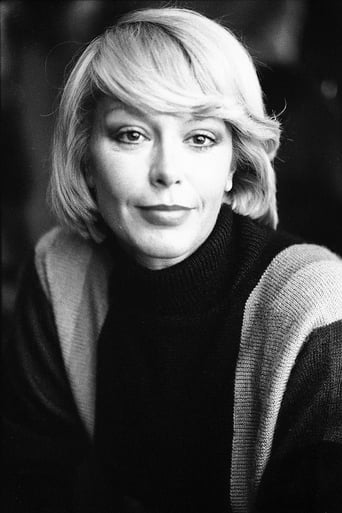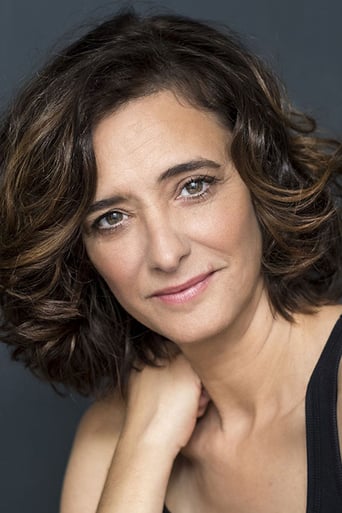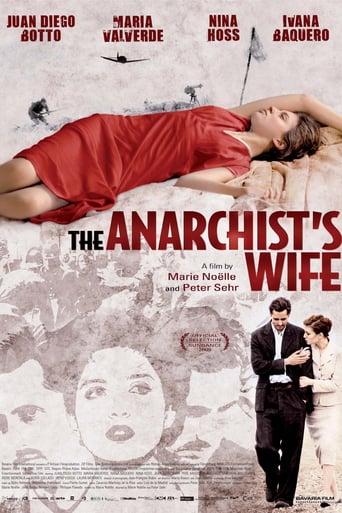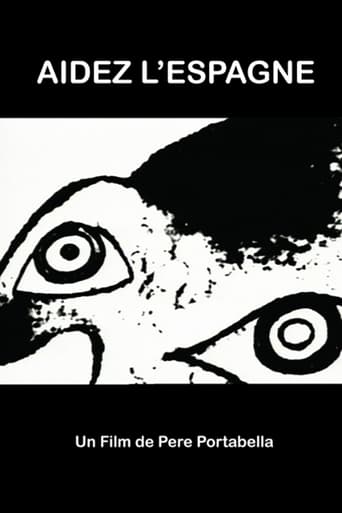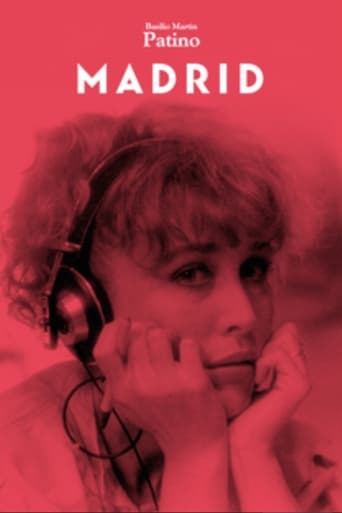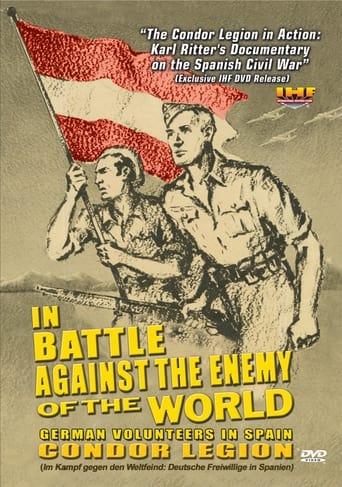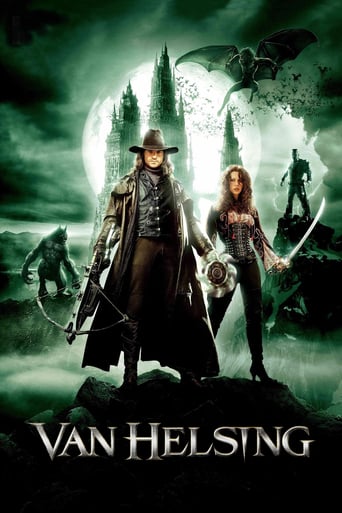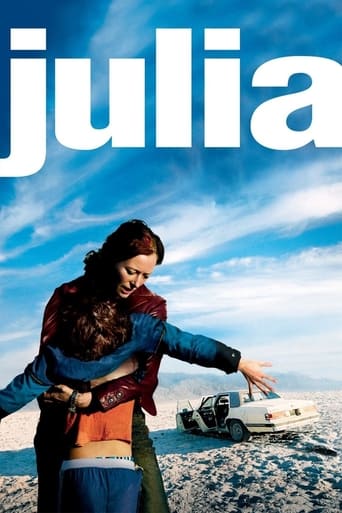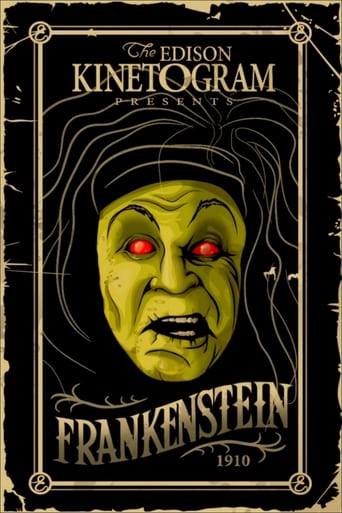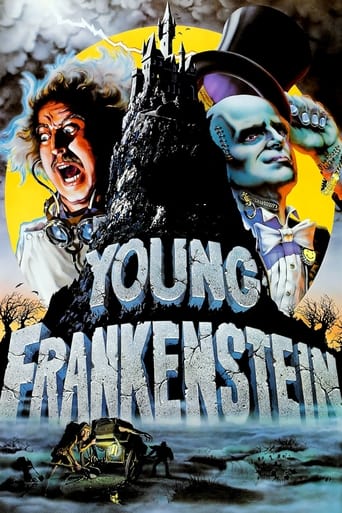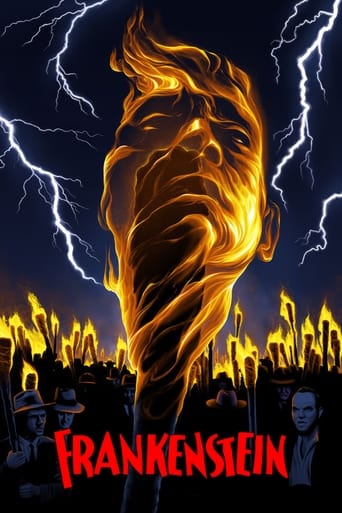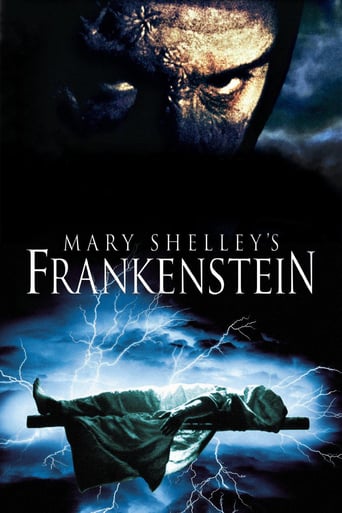
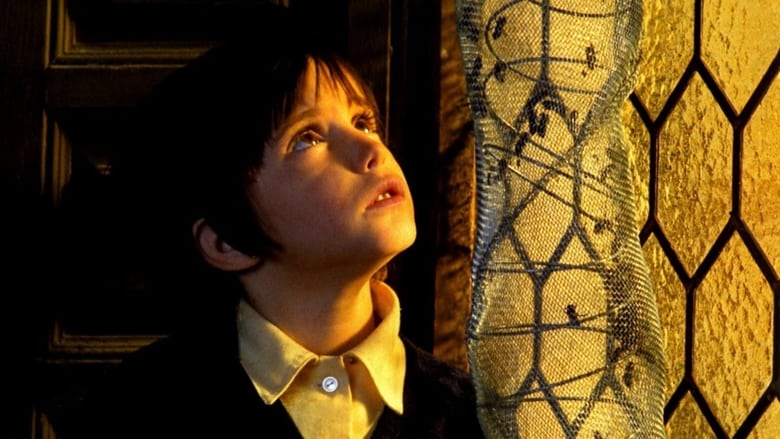
The Spirit of the Beehive (1973)
In the aftermath of the Spanish Civil War, Ana, a sensitive seven-year-old girl in a rural Spanish hamlet is traumatized after a traveling projectionist screens a print of James Whale's 1931 "Frankenstein" for the village. The youngster is profoundly disturbed by the scenes in which the monster murders the little girl and is later killed himself by the villagers. She questions her sister about the profundities of life and death and believes her older sibling when she tells her that the monster is not dead, but exists as a spirit inhabiting a nearby barn. When a Loyalist soldier, a fugitive from Franco's victorious army, hides out in the barn, Ana crosses from reality into a fantasy world of her own.
Watch Trailer
Cast


Similar titles
Reviews
The Spirit of the Beehive dir. Victor Erice, 1973 Arguably the best film about childhood—amongst other things: family, solitude, imagination and the power of film—is the elusive Spanish director Victor Erice's 1973 masterpiece The Spirit of the Beehive. A quiet, aloof scientist, Fernando (played eloquently by Fernando Fernan Gomez) has moved his family of four to the provincial town of Castille amidst Franco's reign in 1940, where Fernando can quietly devote all of his time to his study of bees. In the middle of nowhere, undisturbed in his new country homestead, Fernando is free to spend all of his time at the apiary. His family is left isolated and alone. His two young daughters are left to wander about, playing childish games, entertaining themselves with only their vivid imaginations and ample amounts of time that seem to drip by like honey. Erice with precise parallelism in his direction has Fernando study the bees habitually, manipulating their environments and recording what effects his intervention has on their actions and lives, running likewise to the audience's godlike view of the family and what effects Fernando's choices have on each member of the family. The mother, Teresa (Teresa Gimpera), languishes in a ghost-like-state, wallowing in her seclusion, spending the majority of her time depressed, writing long letters to family and loved ones, some of which were left behind in war. The children, Isabel (Isabel Telleria) and Ana (Ana Torrent)—whose performance you won't be able to find much better, child or adult from any era of acting—are often left unattended by both parents, but fortunately have their lives transformed by chance as they leave school one day and attend a screening of the original Frankenstein in a makeshift movie theater. The film is put on by a gruff, carnival barker of a man, a traveling movie projectionist who promises amazement, frights and a life changing experience. Ana is terrified and in awe of the picture and cannot come to terms with the monster, but is particularly disturbed by how the townspeople in the film treat the monster. Ana, wide-eyed and gullible, falls right into the bored amusement of her older sister and the stories she tells. In a simple, childish, yet poetic yarn, Isabel explains that the monster really did not die as Ana watched in the film because the monster is in fact a spirit who cannot die, and is actually a spirit that Isabel herself has witnessed in the well out at the abandoned barn. Ana becomes obsessed with finding her elusive monster, leading to a wonderfully lyrical turn in the story as the old barn is home to a rough man, a criminal of sorts, wounded and on the run from the police. Erice masterfully creates a film that is simply transcendental; a beautifully haunting allegory, intermingled with a restrained and unique coming-of-age story set against the backdrop of Franco-era hell. Ana's growing disconnect with reality is equally matched by the geographic isolation of each pastoral frame, along with the methodic imagery of the bees that Erice uses (much like his methodic filming of the quince tree 20 years later in The Quince Tree Sun). The amber glow, like honey, with which Erice and the cinematographer light the house, along with the honeycomb design in the old, farmhouse's window pane, only further the beehive metaphor, putting the family in their own isolated apiary, only there is no one to control or record the changes. The Spirit of the Beehive is poetic, breeding moments of idyllic childhood with memories of disturbing solitude and danger. When imagination and reality become too close, creating chaos, a chaos mirrored by the bees that Fernando introduces to an unnatural environment, which brings Ana rushing back to reality, yet still (the audience is left guessing) unsure of the actions of the adults and "her monster." No one cares for hyperbole, but to say Beehive is one of the most visually stunning films ever made is only accurate. Luis Cuadrado photographed the film with such beauty it is hard to find anything to equal, not to mention the man was going blind at the time of the production. Erice's first masterpiece—and one of the few films he ever made, which makes it that much more of a treasure—is truly a marvel and something to behold on various levels: visually poetic, narratively sensual, directed with as much care as Fernando cares for his bees, and acted with a brilliant level of restraint and maturity rarely found on screen. If you watch The Spirit of the Beehive and you do not like the film the best advice anyone could give you would be to just give up, because it isn't film that you are looking for, maybe a nice show on CBS is more your speed.
I remember reading this in the book of 1001 Movies You Must See Before You Die, the title certainly didn't suggest anything to me about the plot, but it was rated highly by critics as well and I was definitely going to watch and hope for the best. Basically, set in 1940, after the end of the Spanish Civil War, with the Francoist victory over the Republican forces, and in an small isolated Spanish village on the Castilian plateau lives beekeeper and amateur mycologist Fernando (Fernando Fernán Gómez), his younger wife Teresa (Teresa Gimpera), and their two adolescent daughters Isabel (Isabel Tellería) and Ana (Ana Torrent). During the war Teresa met and fell for a soldier, she has been communicating with him through letters and longs to be with him again, due to this the family life is cold and distant, especially between the husband and wife, but at least their children remain close, they are not just sisters but the best of friends. The sisters go to the local cinema together and watch the latest movie to arrive in town as part of a travelling movie, classic horror movie Frankenstein (1931), and it leaves a lasting impression on six year old Ana, she was not frightened, but she was fascinated by the scene where the Monster making friends with a little girl before she is thrown into the water and drowns. Isabel assures her that everything in the film is fake, but she can think of the Monster as being like a spirit that she can call for, and she even tells her gullible sister that it lives in an abandoned farmhouse and will reveal itself at night when she makes friends with it, Ana returns alone there many times to look for him, but only finds a large footprint each time. Isabel one day lets out a loud scream in the house, Ana comes to see what is wrong and finds her lying perfectly still on the floor, she is in fact pretending to be dead, and that night Ana closes her eyes calling to the Monsters she longs to meet, and at the same during this night a fugitive republican soldier (Juan Margallo) jumps from a moving train and limps to hide in the farmhouse. The next day Ana goes to the farmhouse as usual and finds the soldier, she does not run in terror however, she feeds him and brings some of her father's clothing and pocket watch, he is wordless and she does not speak either, this silent friendship seems very similar to that Frankenstein, but it is brought to an end when during the night police catch up to him and shoot him. The police find the clothing and pocket watch, connect it with Fernando, and the father realises that his younger daughter helped the strange man, Ana goes back to the farmhouse to find the man she assumes is the Monster, she only finds fresh blood on the floor, her father confronts her before she runs away, and wandering into the woods comes across poisonous mushrooms she was told would kill anyone who eats it. It is unclear is she did eat a mushroom, but she has a vision of Frankenstein's Monster (José Villasante) gazing at her sadly behind her as she kneels beside the water, meanwhile Teresa is seen burning a letter meant for her past lover, she is seen later caring for Fernando as well, so the affair is likely to be over, a search party finds Ana the next morning, but she refuses to speak and eat, the doctor assures the parents is shock, at night she closes her eyes and appears to still call for a spirit. Also starring Laly Soldevila as Doña Lucía, Miguel Picazo as Doctor and Ketty De La Cámara as Milagros. Young Torrent gives an enchanting performance as the little girl mistaking a fictional character for a spirit, and later being embodied by the soldier she shortly befriends, this film works really well because it feels authentic to the time it is set, there are interesting things to see, including the beekeeping (hence the title), and it is simple but really charming, a wonderfully watchable period drama. Very good!
The Spirit of the Beehive (1973)Seen just for what it is, a story of a little girl and her precious innocence in a world seeming to teem with quiet adult mysteries, this is a beautiful and somewhat slow movie. Sometimes a movie can be so evocative and transporting, the slowness is a gift, a necessary quality for being absorbed and lost in another world. And an elegiac world, sad and embracing and heavenly all at once.For me, thought, the slow pace began to weigh down the better parts of the movie, and in the simpler parts it become a distraction. In a few sections with somewhat awkward acting (a scene between the main woman, a kind of Nordic looking troubled soul, and a doctor, is glaringly bad), the movie showed its underbelly, which is really a bit full of itself. The metaphors are pushy and overused, the utterly sweet little girl the one unifying and transcendent element.Again, just seen for what it is, set in 1940 Spain (just after its civil war, and during WWII, though Spain largely avoided the war because it was thoroughly fascist by then) it is filled with isolation and desolate landscapes and a kind of loneliness that goes beyond isolation. The key, and important, twist at the beginning, the arrival of a copy of the 1931 American movie "Frankenstein" (dubbed into Spanish), is a penetration of this sadness from outside of Spain, and outside of the rural world of these simple villagers. The little girl is rapt, and her acceptance of the monster in her heart, almost literally believing in him, is a metaphor for wanting more than what life is going to offer, but getting more than other might expect simply by looking for it, reaching out for the gentle monster of your dreams.There are other metaphors, little ones like the out of tune piano, and large ones like the beehives, which inspire some inner monologues that push meaning far too hard. There is a second dim theme to the plot, about this woman having an affair that tears deep into her heart. There is a sense of flow to the movie, of broad horizons (the land is flat and barren), or repetition that builds on itself. It's a thoughtful movie, certainly, and a deliberate one, and a very slow one. It won't transport many viewers (though it has a growing and worshipful following among critics and movie buffs). I don't think the translation and subtitles were a problem. I saw it with a native Spanish speaker who was equally open to the movie's magic and equally dulled by its slow pace and its dwelling on small things far too long, as if taking for granted a patient and spellbound audience.So you might have to see the movie for what most viewers, especially younger ones, no longer understand: it is a metaphor and almost a protest against the continuing if weakening fascist government of Spain in 1973. It had been 35 years since the civil war tipped in favor of the fascists, and the oppressive government had squashed Spain's development as an economy and as an artistic culture all that time. This was a typical faint but legible response, filled with subtle hints of defiance, wrapped in mystery and analogy as a way of getting by the censors.But most of all, this is about human nature, beyond politics. It's about wanting more, about being alone in a family that should be very together. Enter with patience, and willingness to get lost in the mood of it all, because this is the soul of the movie, and it might just win you over.
This is surely one of the most acclaimed films (winning every award it was nominated for!) to emerge from Spain over the years and also among the most insightful looks at childhood ever captured on celluloid. The girls involved are both excellent, but Ana Torrent as the more sensitive of the two is genuinely captivating; I also have RAISE RAVENS (1975), ELISA MY LOVE (1977) and OGRE (1979) from this initial phase of her career (but have yet to watch any of them) although I did get to see the girl play a leading role as an adult in THESIS (1996) and a supporting one in THE OTHER BOLEYN GIRL (2008).To begin with, I was especially drawn to this in view of its connection to James Whale's FRANKENSTEIN (1931) – whose censored screening here is treated as an event by the populace of the village – hence my decision to include the film in a retrospective of that director (one of my personal favorites)'s work! In fact, I had first watched it on Cable TV without even the benefit of English subtitles (that said, it is essentially a mood-piece and does not rely too heavily on dialogue); ironically, given the lyrical cinematography on display, cameraman Luis Cuadrado was going blind at the time and would eventually commit suicide in 1980 (at just 45) when he lost his eyesight completely!While the father is engrossed in his beekeeping activities (which extends to the designs on the window-panes within their home!), the mother writes letters to relatives caught up in the war: the couple, however, seem to have grown apart as communication between them is otherwise minimal. Consequently, the two girls are left pretty much to their own devices for long periods of time – recalling Rene' Clement's FORBIDDEN GAMES (1952) – which gives free rein to their imagination (but also susceptibility). Still, they often wander in the country-side, going to the railroad tracks or an abandoned farm: one day, Torrent stumbles upon a wounded deserting soldier from the Spanish Civil War and, naively, she takes her smart-aleck sister's assertion that he is the Frankenstein monster for the truth! This incident also links THE SPIRIT OF THE BEEHIVE with another superb film about children – Bryan Forbes' WHISTLE DOWN THE WIND (1961) – where Hayley Mills takes an escaped convict she finds in a barnyard (Alan Bates) to be Jesus Christ! Before long, the soldier is summarily executed (in one brilliantly economical shot) and the little girl goes missing after her elder sister had played yet another trick on her by pretending to be dead! The whole village takes part in the ensuing search and she is eventually found asleep in a rubble but not before having been 'accompanied' in her flight by the Frankenstein monster! In the end, the film's deliberately low-key nature would doubtless be deemed pretentious by mainstream audiences but, for connoisseurs, this factor merely augments its inherently haunting quality and nostalgia for the days when the arrival of a new movie in town really meant something to people (as a social event) and children (as fuel for the imagination). By the way, while this film has been granted the deluxe 2-Disc treatment from Criterion, I have opted for the more affordable barebones Optimum R2 disc and recently I have also acquired the director's subsequent 2 films – THE SOUTH (1983) and THE QUINCE TREE SUN (1992) – but have yet to watch either...



